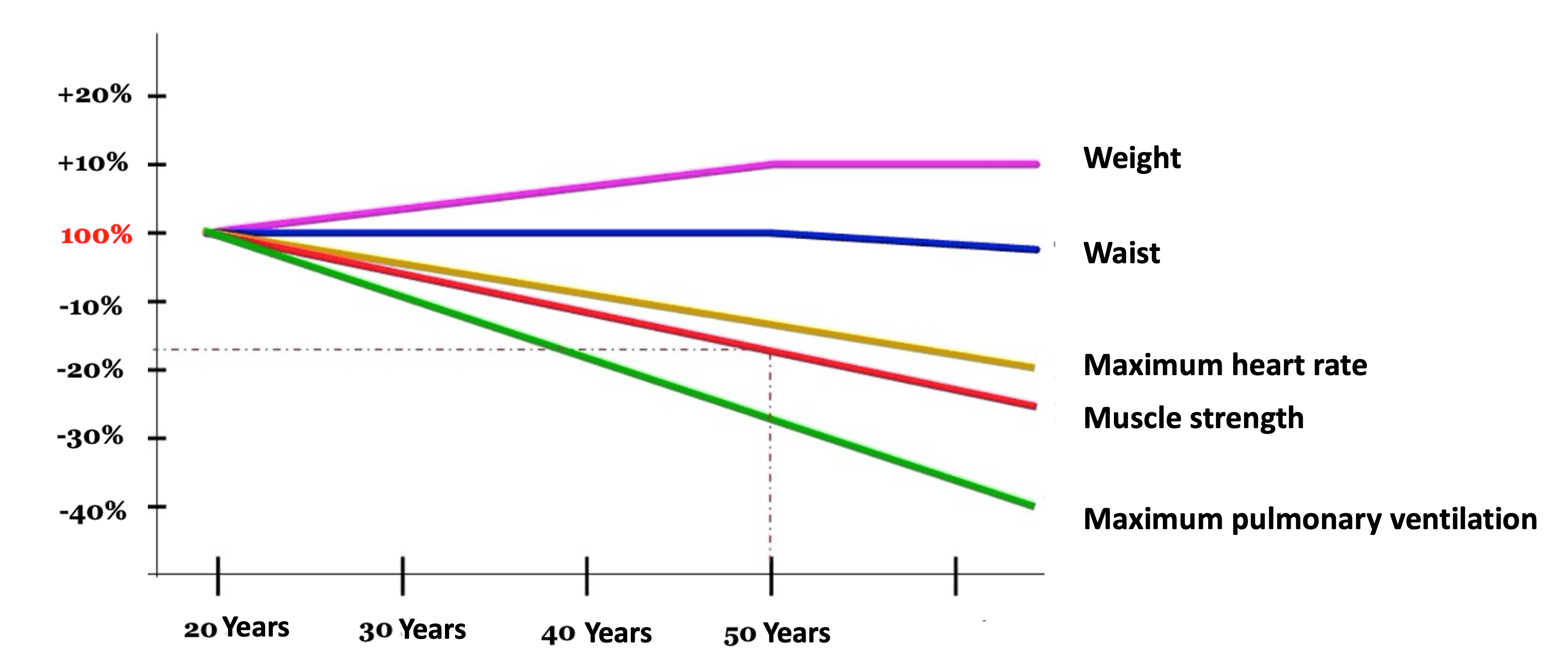Let’s start by highlighting the definition of Ergonomics:
Ergonomics (or the study of human factors) is the scientific discipline devoted to the fundamental understanding of the interactions between people and other system components, and the implementation in the design of relevant theory, principles, methods, and data to improve human well-being and effectiveness global of systems.
Ergonomic adjustments in the workplace help employees avoid repetitive strain injuries and other stress-related problems. A great deal of attention has been paid to ergonomics in recent years. Many people don’t understand exactly what ergonomics involves or how it can improve their workday, so today we’ll be covering some of the most commonly asked questions about ergonomics in the workplace.
This article explains how ergonomics makes businesses more profitable, productive, safe, healthy, and happy.
What are the Objectives of Ergonomics?
-
Detecting the risk of physical and mental fatigue
-
Controlling the workplace environment
-
Adapting technology for existing staff
-
Optimizing human/machine interaction
-
Compliance with regulations
As time goes by, and workers age they need even more help from the workplace environment, as seen below:

How does Ergonomics improve Productivity?

1. Employees are more engaged.
If you make a few ergonomic changes at work, you may find that your employees are more engaged than ever. Part of this comes down to comfort, as well as health. If your workers are uncomfortable, they’re not going to be engaged with their work. If their backs hurt from bending over to pick up heavy parts all day, they’re not going to be as productive either. Similarly, if your employees are worried about health risks related to their job, they’re going to be less engaged as well. If they have to spend a lot of time moving around because their workstation is uncomfortable, they’re also not going to be as engaged as someone with a healthier workstation.
2. Employees are healthier.
Health issues may not always be obvious, but they can definitely affect your employees’ performance. You may be able to avoid the need for sick days, or the need to take extra time off due to injury, by implementing ergonomic changes in the workplace. Health issues that may be avoided through ergonomic adjustments to the workplace include carpal tunnel syndrome, back pain, joint pain, eye strain, and many others. These are all very real problems that can be easily avoided with a few simple adjustments. If your workers are healthier, they’re also going to be more productive. This is especially true if you have to deal with a lot of sick days, or someone who has to take extra time off due to injury.
3. Workers are more comfortable.
Making a few ergonomic adjustments at work can not only help prevent your employees from getting sick, but it can also actually make them more comfortable while they’re working. This is particularly true if your employees have a desk job, as many are forced to spend hours every day at a computer. If your workers have a comfy chair, they’re also not as likely to get eye strain from staring at a screen all day. This makes it easier for them to avoid headaches and other issues that come with eye strain. At the same time, if your employees have proper lighting and a desk that allows them to avoid wrist strain, they’re also going to be more comfortable while they’re working. This can help your workers be more productive throughout the day, as they don’t have to deal with the discomfort that comes from sitting in a bad chair or straining their wrists on a bad desk.
4. Workers are more efficient.
Another way ergonomic adjustments can help your employees is by making them more efficient. If your workers are healthy, comfortable, and engaged, they’re also going to be more efficient when completing tasks. Efficiency is important for businesses of all sizes, as it helps workers get more done during their workday. If your employees are efficient, you can assign them more tasks, and have them get through their work faster. This can help you avoid hiring new workers, or losing revenue by having to turn away customers because you don’t have the capacity to take on their business.
5. Less movement to complete a job means an increase in productivity.
Sometimes it’s not just the employee’s workstation that needs an adjustment to make it more ergonomic. It may be the job itself. If you ask your workers to stand to complete certain tasks, you’re increasing the amount of movement they need to do their work. For example, if they have to always leave the workstation to get the tools that they need, maybe even picking up heavy parts all day, they are more likely to get tired really fast and get burned out, not to mention the back injury to which they are prone. This can put a lot of strain on your employees, and make it difficult for them to complete all of their work in a single day. If you notice that your workers are having trouble getting everything done in a single day, adjusting the job so they don’t have to move as much can help them get through their tasks more efficiently.
2. How does Ergonomics Improve Quality?

1. Ergonomic workstations lead to fewer errors.
Ergonomic workstations reduce the risk of injury to workers. Injuries can lead to reduced productivity and quality parts, lost time at work, and even expensive workers’ compensation claims. To minimize the risk of injury, businesses should create ergonomic workstations for employees. An ergonomic workstation includes the following features: – Properly-placed workstations – Workstations should be placed at an appropriate height for workers to prevent fatigue. A desk that is too high or too low requires workers to awkwardly bend their legs or sit with poor posture. – Comfortable chairs – Chairs should be adjusted for each user to support the lower back and properly distribute their weight.
To reduce errors, create a clean and organized workplace that is easy to navigate and less likely to make human errors like scratching a part because of tiredness. This can be done by eliminating clutter, having a filing system, and using labels and signs.
2. Reducing bad postures
Bad postures are a major cause of injury among office workers. Bad postures can lead to aches and pains in the back, shoulders, neck, or other parts of the body. Bad postures can also lead to musculoskeletal disorders (MSDs) such as carpal tunnel syndrome, tennis elbow, and rotator cuff injuries. – Bad postures include using the wrists to support weight, holding the phone between the ear and shoulder, sitting with the knees under the desk, leaning far to process a part, and many others – To reduce bad postures in the workplace, promote the use of sit-to-stand desks and standing desks, manage the height of the worktable to fit their height. You can also encourage the use of a footrest and a wrist rest.
3. Reducing repetitions
Repetitive strain injuries are a common problem among workers. These injuries occur when a worker performs the same motion over and over again, even if the motion is not heavy or strenuous. This can happen when a worker holds a posture for an extended period of time or performs a task with poor form. – Repetitive strain injuries can develop in the hands and wrists from constant computer use. This type of injury is known as repetitive strain injury (RSI). – To reduce repetitive strain injuries, provide alternative tools for workers to perform tasks. Additionally, create regular breaks for workers between tasks to give their muscles a chance to rest and you will be rewarded with fewer worker mistakes.
Conclusion
Making a few ergonomic adjustments in the workplace can go a long way toward improving your employees’ productivity and health. These changes can also help workers become more engaged with their jobs, which is always a good thing for any organization. If you’re looking to improve the ergonomics of your workplace, the first step is to identify the most common issues. From there, it’s as simple as making a few adjustments. These changes don’t have to be drastic, or expensive, either. In fact, many of the adjustments can be made with materials that you likely already have around the workplace.
The benefits of ergonomics should not be overlooked! A working environment that optimizes worker health and productivity is known as an ergonomic workstation. Ergonomics is a field of study focused on designing work processes, equipment, and environments to reduce physical stress on workers and increase efficiency. Ergonomics has many benefits for businesses, including improved worker performance, reduced risk of injuries among employees, and even an increase in quality. These concepts also enable businesses to save money on healthcare costs and insurance premiums by reducing the risk of repetitive strain injuries among workers. Ergonomics also helps improve workplace culture and morale by creating safer working conditions for employees.





